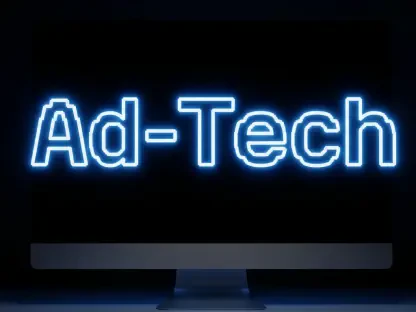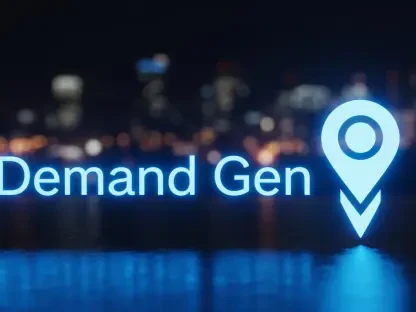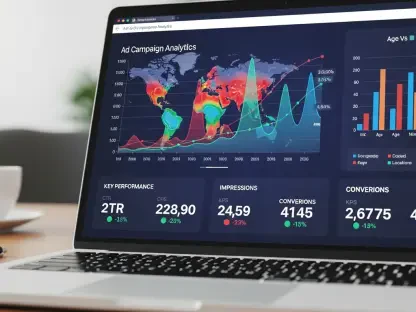Unveiling the Power of Immersive Tech in Healthcare
Imagine a world where a physician can practice a complex surgical procedure in a fully simulated environment or a patient can visualize the inner workings of a life-saving medication through a headset. This is no longer a distant vision but a tangible reality shaping the healthcare digital marketing landscape in 2025. With the market valued at USD 305 million and a projected compound annual growth rate (CAGR) of 26% through 2035, augmented reality (AR) and virtual reality (VR) are at the forefront of this revolution. This analysis aims to dissect the role of these immersive technologies in transforming how healthcare providers and pharmaceutical companies connect with their audiences. By exploring current trends, regional dynamics, and future projections, the goal is to provide a clear roadmap for stakeholders navigating this rapidly evolving sector. The significance lies in understanding how AR and VR can bridge critical gaps in education, engagement, and accessibility within healthcare marketing.
Market Trends and In-Depth Analysis
Current State: Immersive Tools Reshaping Engagement
The healthcare digital marketing sector is undergoing a seismic shift, driven by the adoption of AR and VR technologies. Despite healthcare accounting for only 2% of global digital advertising spend, the demand for interactive and immersive content is pushing boundaries. These tools are predominantly used in training modules and tradeshow demonstrations, offering 360-degree videos and simulations that captivate both professionals and consumers. The advantage lies in their ability to deliver experiential learning and marketing, far surpassing traditional static methods in terms of retention and emotional impact. Data indicates that immersive training programs have improved knowledge retention by up to 30% compared to conventional approaches, highlighting their effectiveness.
Regional Insights: Growth Hotspots and Challenges
Geographically, the market shows a strong presence of AR and VR service providers in developing regions, particularly in the Asia-Pacific area. Over 120 companies, many established after 2010, are fueling innovation through app development and mixed reality (MR) solutions. This regional diversity presents immense growth potential in emerging economies, where over 70% of providers focus on versatile content like interactive animations. However, disparities in technological infrastructure and regulatory frameworks pose significant hurdles. Strategic partnerships between therapy developers and tech firms are seen as vital to navigating these complexities and ensuring scalable adoption across varied markets.
Technological Innovations: Beyond AR and VR
While AR and VR dominate the current landscape, emerging technologies like mixed reality are gaining traction, blending physical and digital environments for even more realistic interactions. This diversification reflects a maturing market ready to tackle broader applications, from patient education at the point of care to virtual consultations. The decreasing cost of hardware and software development is also democratizing access, enabling smaller firms to enter the space. As innovations continue to unfold, the focus is shifting toward creating personalized, data-driven experiences that cater to specific consumer needs, further amplifying the reach and impact of digital campaigns.
Consumer Dynamics: Rising Demand for Digital Interaction
A notable trend shaping this market is the evolving consumer perspective, with growing interest in digital engagement. Patients and healthcare professionals alike are seeking content that goes beyond traditional advertisements, craving tools that offer deeper insights into treatments and medical devices. AR and VR campaigns are meeting this demand by providing virtual experiences, such as visualizing how a drug interacts within the body. Yet, challenges like data privacy concerns and the digital divide—where access to technology remains uneven—must be addressed to ensure inclusivity. The potential for stronger emotional connections through immersive storytelling is undeniable, setting a new benchmark for audience interaction.
Future Projections: A Decade of Exponential Growth
Looking ahead, the healthcare digital marketing arena is poised for remarkable expansion, with the projected 26% CAGR signaling robust growth through 2035. Advancements in technology, coupled with regulatory updates on digital health tools, are expected to accelerate adoption rates. Experts anticipate that within the next decade, VR could become a standard for remote patient consultations, while AR might dominate in-person educational efforts. Economic factors, such as reduced hardware costs, will further lower entry barriers, enabling wider implementation. The untapped potential in experiential marketing suggests that transformative campaigns will redefine industry standards, driven by collaborations between pharmaceutical giants and tech innovators.
Reflecting on the Journey and Strategic Pathways Forward
Looking back, the analysis reveals how AR and VR have reshaped healthcare digital marketing by enhancing training, patient engagement, and market reach through immersive experiences. The data paints a picture of a sector on the cusp of exponential growth, fueled by technological advancements and consumer demand for interactive content. Regional dynamics underscore the importance of tailored strategies to overcome infrastructure and regulatory challenges in emerging markets. For stakeholders, the path forward involves starting with pilot projects to test AR and VR applications in specific areas like product education or staff training. Building alliances with established tech providers helps mitigate costs and risks, while prioritizing data security and accessibility ensures broader impact. As the industry moves into the next phase, focusing on personalized, measurable campaigns emerges as a key strategy to harness the full potential of this digital revolution.









